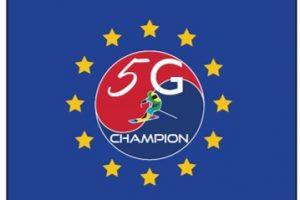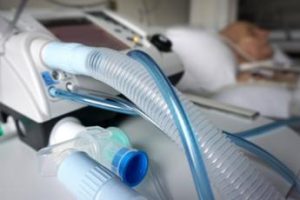Now, however, the need to reduce the cost of caring for an aging population is driving the technologies that have been maturing elsewhere into the medical market.
Many of the devices now available rest on wireless technology, be it short-range Bluetooth-like communications in mobile data loggers, which enable patients to leave their beds sooner, or in ultra wideband (UWB) technology for real-time tracking of equipment and people in hospitals.
But wireless is not the be-all and end-all. A variety of lab-on-chip devices using microfluidics to provide point-of-care sample analysis are also being developed by universities and companies around the world, and researchers are also investigating the incorporation of biological structures such as neurons on chips.
Belgian chip innovation centre IMEC even says brain-controlled prostheses and implants, to restore neurological or sensory functions after injury or disease, are in the offing.
“It’s a buoyant market because the progression in technology in areas outside of medical is gradually finding its way into the market,” explains Andrew Diston, head of wireless at technology developer Cambridge Consultants (CCL). “If you think of one of the ways in which you can reduce the cost of medical treatment, it is to get people out of the hospitals more quickly and into home care. And all IT technologies play in that domain.”
Diston is set to leave the UK later this year to head a CCL office on the US east coast dedicated to medical technologies. “The sorts of technologies we’ll be pushing are: microelectronics into patient monitoring; therapeutics such as cardiology devices and implants; and smart technologies for implants such as replacement joints,” he says.
The US market is in a stronger position than Europe in terms of its support for wireless technologies in the medical field. This is because it has managed to thrash out and set aside bandwidth for the Wireless Medical Telemetry Service (WMTS), a standard for wireless patient monitoring. “No-one has made the spectrum available in Europe, so there is some challenge to catch up,” says Diston.
Telemedicine, the remote monitoring of patients in their homes via some kind of IP link, means nurses can cover many more people per day. This technology can be particularly valuable in vast countries like Canada, and Ottawa firm March Networks produces kits of Bluetooth-enabled sensors for patients to monitor themselves, under webcam supervision.
The company’s vital signs monitoring equipment is currently being used to monitor the health of climbers on an ascent of Everest. The expedition is scheduled to continue until July, using the equipment to monitor the blood oxygen level, heart rate, blood pressure, and body temperature of the climbers. The recorded data will be stored on Bluetooth PDAs and ultimately transmitted via satellite to a website.
If one of those climbers becomes ill, analysis of any biological sample is likely to be done in a lab, using traditional, if modern, equipment. That means getting the sample off the mountain, and the delay could prove costly. While the possibility of on-the-spot testing for a broad range of illnesses is not yet a reality, plenty of firms are developing the technology to make lab-on-chip devices.
One of them, Cambridge Lab on Chip, a spin-off from the University of Cambridge, is using novel techniques for manipulating fluids, and combining them with detection technology.
Dr Charles Smith, of the University’s Cavendish Laboratory, says the chip uses vastly less power than existing assay equipment – it runs at 5V rather than 1,000V – and is CMOS compatible. It should mean you do not need “a huge pump at one end, and a huge optical detection technique at the other”.
“Our initial idea is just to show the advantages of our technology in existing lab-on-a-chip areas, but ultimately we would like to work into the areas where we can incorporate the detection into the chip as well,” says Smith. “Often you just want to see yes/no has something happened, rather than anything too quantitative. And you can do that on-chip reasonably easily.”
The company is developing its own intellectual property around a detection technique.
Also in Cambridge, Ubisense is developing real-time position-sensing systems using UWB for a number of markets, medical being one.
It has just launched its first generation ‘Ubitags’ (which, in conjunction with a network of basestations, give position information accurate to 150mm) at the University of Illinois, which is using them to research into smart environments. In a hospital environment the technology would be used to track doctors and key equipment.
“We’re looking for the second generation product to come out in the next few months,” says Dr Andy Ward, Ubisense’s CTO. “We only actually launched a few weeks ago, so it’s still early days, but we’ve got people evaluating the systems and software in real environments.”
 Electronics Weekly
Electronics Weekly



